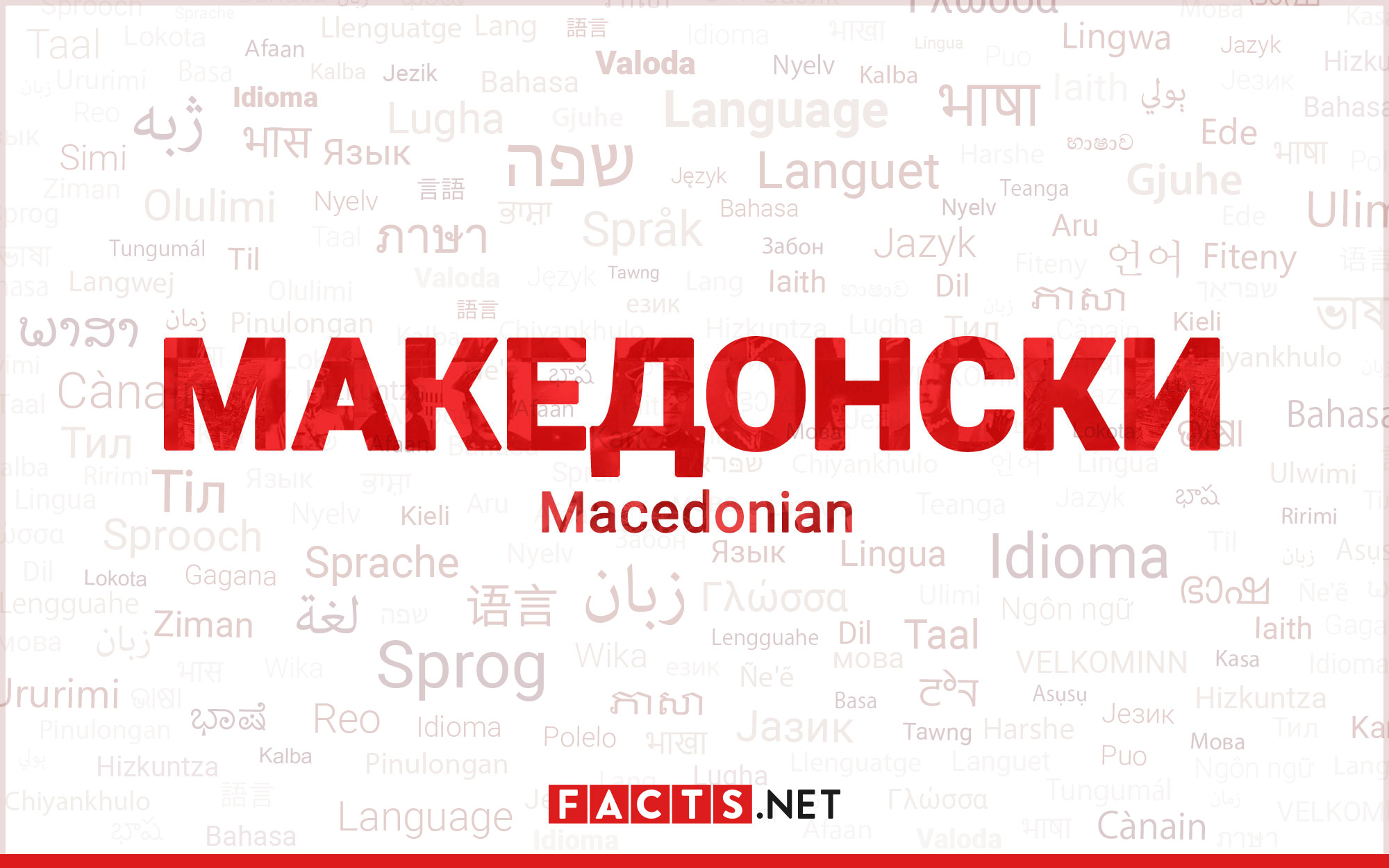
Macedonian, a South Slavic language, is the official language of North Macedonia. With its rich history and unique characteristics, Macedonian is an enigmatic language that has captivated linguists and language enthusiasts alike. From its origins to its distinct features, there is much to learn and appreciate about this fascinating language.
In this article, we will explore 14 intriguing facts about Macedonian that will shed light on its linguistic peculiarities and cultural significance. Whether you are curious about the linguistic ties between Macedonian and other Slavic languages, or you want to delve into the intricacies of its grammar and alphabet, this article will take you on a journey of discovery.
So, fasten your seatbelts and get ready to unravel the mysteries of Macedonian language, as we embark on a linguistic adventure that will leave you with a newfound appreciation for this unique and captivating Slavic language.
Key Takeaways:
- Macedonian is a South Slavic language with a unique phonetic feature called “vowel reduction” and a rich literary tradition dating back to the 9th century.
- The language has its own distinct literary standard and is relatively straightforward in grammar compared to other Slavic languages.
Macedonian belongs to the South Slavic language family.
Macedonian is a member of the South Slavic language family, which also includes Bulgarian, Serbian, Croatian, and Slovenian.
It is the official language of North Macedonia.
Macedonian is the official language of North Macedonia and is spoken by the majority of its population.
Macedonian is written using the Cyrillic script.
The Macedonian language is primarily written using the Cyrillic script, with 31 letters in its alphabet.
It has a rich literary tradition.
Macedonian literature dates back to the 9th century and has produced notable authors and poets over the centuries.
Macedonian has a unique phonetic feature called “vowel reduction”.
Vowel reduction in Macedonian refers to the modification of certain vowel sounds in unstressed syllables.
The Macedonian language has three dialect groups.
Macedonian is divided into three main dialect groups: the Eastern, Western, and Northwestern dialects.
Macedonian has been influenced by various languages throughout its history.
Throughout history, Macedonian has been influenced by Greek, Turkish, Serbian, and other neighboring languages.
Macedonian has a grammatical feature called “verb aspect”.
Verbs in Macedonian can be categorized into two aspects – perfective and imperfective – which indicate the completion or ongoing nature of an action.
The Macedonian vocabulary includes loanwords from multiple languages.
Macedonian has borrowed words from Greek, Turkish, and other languages due to historical and cultural interactions.
Macedonian is an inflected language.
The Macedonian language uses inflections to mark grammatical relationships between words, including noun cases, verb conjugations, and adjective forms.
Macedonian has its own unique pronunciation rules.
Accurate pronunciation in Macedonian requires understanding specific rules for stress placement and phonetic patterns.
The first known Macedonian book was printed in 1519.
The oldest known book in the Macedonian language, “Abagar” by Grigor Prlicev, was printed in Venice in 1519.
The grammar of Macedonian is relatively straightforward.
Compared to some other Slavic languages, Macedonian grammar is considered to be relatively straightforward and less complex.
Macedonian has its own distinct literary standard.
Since the standardization of the language in the 20th century, Macedonian has developed its own distinct literary standard.
These were just a few intriguing facts about Macedonian (Language). With its rich history, unique phonetic features, and influence from neighboring languages, Macedonian holds its own place among the Slavic languages. Whether you are interested in linguistics or planning to explore the beautiful country of North Macedonia, learning more about the Macedonian language can truly enhance your experience.
Conclusion
In conclusion, the Macedonian language is a fascinating and enigmatic linguistic gem. From its rich history and unique writing system to its distinct cultural significance, there is much to discover and appreciate about this language. Whether you are a language enthusiast, a traveler, or simply curious about different languages, exploring Macedonian can open up a world of understanding and appreciation for the Macedonian culture and its people.
FAQs
Q: How many people speak Macedonian?
A: Approximately 2 million people worldwide speak Macedonian as their first language, primarily in North Macedonia and neighboring countries.
Q: What is the alphabet used in the Macedonian language?
A: The Macedonian language uses the Cyrillic alphabet, which consists of 31 letters, including 2 additional ones specific to the Macedonian language.
Q: Is Macedonian similar to other Slavic languages?
A: Macedonian is part of the South Slavic language group and shares similarities with other Slavic languages such as Bulgarian and Serbian, but it also has distinct features that set it apart.
Q: Can I learn Macedonian if I already speak another Slavic language?
A: Yes, if you already speak another Slavic language, learning Macedonian can be relatively easier due to the shared grammatical structure and vocabulary. However, there will still be some differences to learn and adapt to.
Q: Are there any resources available for learning Macedonian?
A: Yes, there are various online courses, textbooks, and language exchange platforms that can assist you in learning the Macedonian language. Additionally, language schools or cultural centers in regions with Macedonian communities may also offer classes.
Was this page helpful?
Our commitment to delivering trustworthy and engaging content is at the heart of what we do. Each fact on our site is contributed by real users like you, bringing a wealth of diverse insights and information. To ensure the highest standards of accuracy and reliability, our dedicated editors meticulously review each submission. This process guarantees that the facts we share are not only fascinating but also credible. Trust in our commitment to quality and authenticity as you explore and learn with us.
